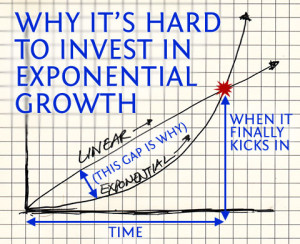Building a strong software as a service (SaaS) business you’re focusing on scaling your software, but simultaneously you’re inevitably needing more supporting personnel. You’re hiring account managers, support technicians, quality assurance, sales directors, and more folks to keep the business humming and growing. Each new client often means that more people will be needed to service that account. Of course as you grow you’ll need more of these people, and many other roles as well, but the question becomes does each new account linearly add some number of additional hires to your roadmap? Can you bend that curve and change the ratio of new accounts to new hires?
The great news is that if you’re team is building software then you’ve got everything you need to change that game. Using innovation and software to eliminate, be more efficient, or to fully automate some work will drastically change the calculations on how many new employees you’ll need. But first, you’ve got to get the baseline metrics on where your team’s time is going.
 Metrics will rule the world
Metrics will rule the world
Knowing where the time is going will give you a true data driven approach to determine how much you can change the equation. If you find that all of your team’s time is in elements that have to be done manually or by a human, then you have to look for another area for improvement. If on the other hand you find large areas of opportunity to automate you’ve got your direction. Having at least one team dedicated to internal tools and process improvements will pay huge dividends over time in at least three areas.
- Efficiency. Shaving off 10% of the work from a 10 person team is equivalent to giving them an extra hire. It’s not easy, but it’s a huge win that will pay off over the long term. Using the metrics on which type of issues have dominated the most of your team’s time will give you the prime targets to attack.
- Automation. Creating software that makes some functions of the team’s work completely push button is a huge win. This is more than just a simple efficiency gain, it’s removing a whole slice of work they previously had to do.
- Elimination. Once you’ve automated a piece of work it becomes much easier to move some of that work to your customers. Shadow work is a phrase commonly used to describe the work pushed to the consumer of a service which previously had been provided as a service. This is clearly the end goal for a lot of efficiency gains, giving your customer the ability to “self-service” their needs.
These things scale. Hiring more people to do these things for your customer don’t. Bend the curve by making the investment in innovation. It’ll pay off.
